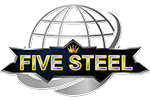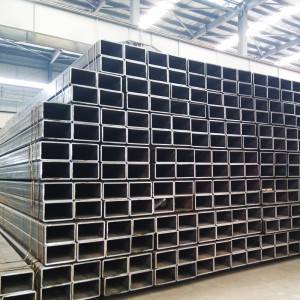Carbon steel pipe depends mainly on carbon to form the durable alloy. Carbon steel pipe may contain other agents sch as manganese, cobalt, or tungsten, but the proportion of these materials is not specified. Carbon steel pipes can withstand great shocks and vibrations. In practical applications, carbon steel pipe has many different shapes for you to choose from, including round steel pipe, square steel pipe, rectangular steel pipe and some other shapes in the market.
In the steel pipe industry, carbon steel pipe accounts for a large proportion of sales in the current market. As one common type of steel pipes in the steel pipe industry, carbon steel pipe has been widely used in a variety of practical applications in modern society. As a rule, carbon steel pipe can be divided into two major categories: cold rolled steel pipe and hot rolled steel pipe. Technically speaking, carbon steel is classified according to how much carbon has been mixed with the base element- iron. As a general rule, as the carbon percentage in carbon pipes increases, the steel becomes stronger and harder. However, its ductility decreases. In practical applications, carbon steel pipe has many different shapes for you to choose from, including round steel pipe, square steel pipe, rectangular steel pipe and some other shapes in the market.
Furthermore, carbon steel pipe can be made much thinner than pipes made from other materials, so they have a greater carrying capacity than pipes of other materials with the same diameter. Carbon steel pipe is highly resistant to shock and vibration. Fluctuating water pressure or shock pressure from a water hammer have little effect on steel. Today’s heavy traffic conditions impose much stress on roadway foundations. Carbon steel pipe is practically unbreakable in transport and service, and for this reason it is okay to lay water mains under roadways.
In our real life, we can often find that carbon steel pipes are widely used in wire system application and provide very good protection to enclosed conductors from impact, moisture, and chemical vapors. For certain conditions, wiring systems in buildings may be subject to frequent alterations, and frequent wiring changes are made simpler and safer through the use of steel conduit, as existing conductors can be withdrawn and new conductors installed, with little disruption along the path of the conduit. For example, it can often be found that EMT conduits are used to protect wire line against chipping, cracking and peeling in most cases. Furthermore, EMT conduit can be used to shield sensitive circuits from electromagnetic interference, and also can prevent emission of such interference from enclosed power cables.
Send your message to us:
Post time: Mar-18-2019





